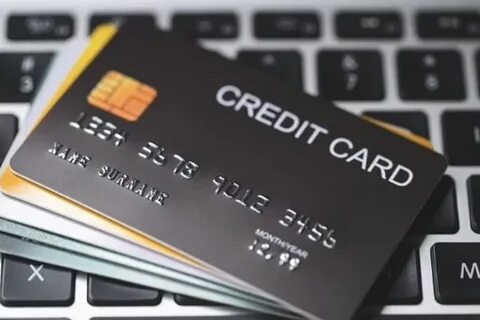Introduction
Imagine reaching into your pocket, tapping a sleek credit card—or perhaps merely tapping your phone—and seeing your purchase approved in milliseconds, your data secured, your reward nicely applied. That might not sound futuristic; it might sound like tomorrow. But in the world of credit cards, we’re already on the cusp of major change. Over the next 12–24 months, the credit-card landscape is being reshaped by three powerful forces: fintech innovation, virtual-card adoption, and the integration of blockchain and AI.
These shifts promise big advantages: more personalization, stronger security, better experience. But they also bring risks: data-privacy concerns, complexity for users, and tension between old and new players. In this blog post we’ll explore these trends, compare what’s changing, weigh pros & cons, and help you understand what to watch for.
The Fintech Revolution in Credit Cards
What “fintech credit cards” actually mean
“Fintech” simply stands for financial technology—using digital tools to improve financial services. When applied to credit cards, it means: cards issued by challenger banks or digital-only platforms, flexible credit-limits, real-time tracking, API integrations, instant issuance, and often seamless mobile usage.
For example, a fintech credit-card might allow you to issue virtual sub-cards for specific vendors, adjust your credit limit quickly, or integrate directly with your expense-management app.
Why this is a big deal
- It broadens access: Fintech cards often come with fewer barriers and are more digitised.
- It enhances control: Issuers can offer better spending dashboards, real-time alerts, and easier integrations.
- It disrupts incumbents: Legacy banks may struggle to match the agility of fintech players.
What to expect in 1–2 years
- More embedded credit-card services: Cards issued within non-banking apps (retail platforms, ride-sharing, even games) rather than separate bank accounts.
- Further customisation: Credit limits dynamically adjusting based on user behaviour; rewards tailored to you.
- Tighter integration with apps: Expect your card to link with budgeting tools, savings targets, and even buy-now-pay-later (BNPL) options.
- Stronger partnership models: Traditional banks teaming up with fintech issuers or white-label platforms to offer modern card products.
The caveats
- Regulation: Fintech cards still face full regulatory compliance—things like data protection, consumer credit rules.
- User learning curve: If the card is embedded in a platform you’re unfamiliar with, you may miss benefits or incur hidden costs.
- Saturation risk: With many fintechs issuing cards, differentiation will matter. Consumers may get overwhelmed.
Virtual Cards: The Plastic is Waning
What are virtual cards?
Virtual cards (sometimes called digital cards) are card-numbers that exist digitally, not physically. You might be issued a single-use card number for an online purchase, or a dedicated virtual card for a subscription. These typically integrate with mobile wallets or apps.
Why this trend is accelerating
- Security: Since you’re not handing over your “real” plastic card, you reduce exposure to fraud or theft.
- Flexibility: You can generate new numbers, cancel them easily, and limit spending.
- Good fit for e-commerce: As online shopping grows, virtual cards make sense for subscription services, trial offers, and global vendors. Indeed, one commentary says: “Virtual cards, cryptocurrencies and A2A payments… aren’t just trends—they’re the future of secure, efficient and flexible payments.”
Key changes we’re likely to see soon
- Wider consumer adoption: Virtual cards will move beyond business/enterprise use into everyday consumer credit cards.
- Single-use and merchant-specific cards: Offerings that let you generate a new virtual card number for each vendor; good for one-off purchases.
- Automatic tokenisation: The card number is replaced by a token for each transaction, reducing risk of reuse or hacking.
- Integration with digital wallets and pay-by-link models: Your virtual card may live entirely within your wallet or smartphone rather than a plastic card at all.
- Phasing out of plastic for mainstream: As virtual cards become dominant, physical cards may become optional add-ons rather than standard.
The downsides & implications
- Some users prefer the tactile “plastic card” or don’t trust entirely digital models.
- Virtual cards still depend on underlying infrastructure: networks, issuer risk, merchant acceptance.
- Complexity: Managing many virtual numbers might confuse some users (e.g., which card number did I use for this subscription?).
- Device dependence: If your phone fails or you lose access, your virtual card may be inaccessible.
Blockchain & Tokenisation: Underpinning the Next Card Era
What role does blockchain play in credit-cards?
“Blockchain” broadly refers to distributed-ledger technologies (DLTs). In the context of credit cards, its importance lies in tokenisation, digital-asset integration, faster settlement, transparency, and possibly alternative “crypto-credit” models.
One major payments-network insight noted: “In 2025, bet on blockchain technology to enhance speed, security and efficiency … its ability to do so will continue to require strategic partnership with crypto natives and financial institutions alike.” Also, the “crypto credit card” market is projected to grow strongly: one source estimates USD 1.6 billion in 2024 rising to USD 9 billion by 2034.
Why this matters for credit cards
- Tokenisation: Traditional card numbers are vulnerable; token-based transactions mean each card/merchant pair gets a unique token. Reduces widespread fraud.
- Crypto-linked credit cards: Some cards now allow rewards or payments in crypto, or use stablecoins for settlement.
- Faster cross-border and settlement flows: Blockchain-based components may reduce friction when cards are used internationally.
- Transparency and auditability: Fraud detection, compliance, and reporting can benefit from immutable ledgers.
What we’ll likely see in the next 1–2 years
- Issuers offering token-only card numbers, with default setting to virtual cards and numberless plastic (or no plastic).
- Hybrid cards that combine traditional credit-card benefits with crypto rewards or settlement options.
- Network evolution: Card networks partnering with blockchain-native firms to process card transactions or manage risk via DLTs.
- Institutional shift: More issuers will develop wallet-to-card linking via blockchain infrastructures.
- Regulation and oversight catching up: Expect regulatory guidance around crypto-credit, tokenisation standards, and consumer protection.
Risks & challenges
- Crypto volatility: If credit cards tie into crypto rewards or stablecoins, users and issuers face added currency risk.
- Interoperability: Many legacy systems still process card payments via old rails; blockchain integration may require heavy lifting.
- Regulatory uncertainty: Crypto and DLT regulation is evolving rapidly and may vary greatly by country.
- Consumer complexity: For average card-user, blockchain jargon (“tokenisation”, “stablecoin rewards”) may feel alien and slow adoption.
Artificial Intelligence: Smarter Cards, Smarter Issuance
How AI touches credit-cards
AI and machine learning are already embedded in many financial operations: credit scoring, fraud detection, customer-service chatbots. In credit cards, this means smarter underwriting, real-time risk monitoring, personalisation of offers, and automated decisioning. A recent article lists how AI is “reinventing the fintech landscape … fraud detection, personalization, inclusivity.”
Examples in practice
- Real-time fraud detection: AI models spot unusual patterns (geographic location change, transaction size anomaly) and block or flag card use.
- Hyper-personalised offers: Based on your past spend, AI might offer a tailored reward category (e.g., extra cash-back for you at coffee shops because you frequent them).
- Credit decisions: Alternative data sources (mobile behaviour, transaction history) + AI may enable faster approvals for users previously underserved.
- Assistant-based spending: According to news, one major network is exploring allowing AI agents to make purchases on your behalf, via linked cards.
What to expect soon
- Dynamic card limits: AI may adjust your credit/reserve limits in real time based on changing patterns, not fixed quarterly reviews.
- Autonomous spending agents: Your assistant might automatically handle repetitive purchases (groceries, subscriptions) with your card under rules you set.
- Personal finance insights: Your card’s app may start telling you “You might spend more than usual this month; here are three adjustments,” via AI.
- Embed trust & explainability: Issuers will need to make AI decisions (approvals/denials) understandable to users—especially under regulation.
- New fraud vectors: As AI becomes more powerful, fraudsters will also use AI to adapt—cards and issuers must keep pace.
Potential downsides
- Bias and fairness: AI models may replicate historical biases (e.g., against certain demographics) unless carefully managed.
- Data-privacy concerns: More personalised cards = more data collected about you. Who has access? How is it secured?
- Loss of control: If your AI “agent” makes purchases for you, you need strong guardrails.
- Over-automation: Some users might feel uneasy handing too much control to machine systems.
Bringing It Together: Side-by-Side Comparison
Here’s a table summarising the core trends, what they mean for credit-cards, benefits, and risks.
| Trend | What it means for credit cards | Key Benefits | Main Risks |
|---|---|---|---|
| Fintech-issued cards | Credit cards built by digi-only issuers or embedded in platforms | Easier access, better digital interface, custom rewards | Regulation, user confusion, market saturation |
| Virtual cards / digital | Cards with no physical plastic or with single-use numbers | Greater security, convenience for online/subscriptions | Device dependence, managing multiple virtual numbers |
| Blockchain / tokenisation | Use of DLTs, token-based card numbers, crypto rewards, cross-border | Faster settlement, embedded crypto, reduced fraud risk | Crypto volatility, regulatory complexity, legacy integration |
| Artificial intelligence | AI for risk, personalization, autonomous spending | Smarter decisions, fewer fraud losses, tailor-made offers | Bias, privacy concerns, over-automation |
What This Means for Consumers
For individuals and business-users alike, these trends will bring real changes—and you’ll want to stay ready. Here are some practical take-aways:
You should look out for
- Cards that let you issue virtual sub-cards: Good for subscriptions, trial services, and better control.
- Cards that support tokenisation by default: When you see a “token” instead of a real card number, great for security.
- Rewards built using data-based insights: If your card app says “We saw you buy X often, here’s 3× reward at X,” that’s AI in action.
- Cards tied to crypto or stablecoins: If you’re comfortable with digital assets, these may offer bonus options—but check risk.
- Transparent terms on AI decisions: When your credit limit changes or a purchase is flagged, a good issuer will explain why.
- Digital-first issuance and mobile wallet support: You may not need plastic at all if your card lives entirely in your phone.
Things to be cautious about
- Hidden fees on newer cards: Fintechs may compete on features, but check the fine print.
- Over-exposure to crypto: If your card rewards or settlement depend heavily on volatile digital assets, know the trade-off.
- Data-sharing concerns: More personalisation often means more data collected—check what you’re consenting to.
- Dependency on devices/internet: Virtual cards and tokens are great until something breaks (phone lost, app down).
- Legacy merchant acceptance: Some smaller vendors may still prefer older card formats—ensure smooth fallback.
Spotlight: Business & B2B Implications
It’s not only consumer-cards that are evolving. Business credit cards and corporate spend under the same umbrella are seeing major transformation.
- Virtual cards are highly suited to business spend: One-use numbers for vendor payments, better tracking of expenses.
- Fintech issuers are enabling integrated expense management and real-time reconciliation in one package.
- The use of blockchain in cross-border corporate card payments can reduce friction, reduce FX costs, and speed up settlement.
- AI-powered spend insights can help companies spot waste, control budgets, and improve compliance.
For businesses, cards will become more than a payment tool—they’ll become a financial management hub. But this also means choosing platforms that align with your tech stack, governance, and risk appetite.
Emerging Themes & Strategic Implications
Embedded Finance = Cards Everywhere
Card-capabilities will be embedded into non-traditional platforms: ride-shares, apps, e-commerce marketplaces, even social-media. Instead of going to your bank for a card, you might get one issued instantly inside the app you already use.
Sustainability & Ethical Considerations
As the technology evolves, expectations around ESG (environment, social, governance) are rising. Card issuers are promoting numberless or metal-free cards, carbon-tracking rewards, and inclusive lending.
Regulation, Privacy & Consumer Rights
With great power comes greater oversight. As AI, blockchain and tokenisation proliferate, regulators will demand more transparency, fairness, and data protection. Card issuers must be ready for audits, consent flows, fair-decision mandates, and cross-border licensing.
Legacy vs. New Players
Traditional banks and network providers (Visa, Mastercard) aren’t standing still—they’re investing in tokenisation, partnerships with crypto/fintech firms, and mobile-first cards. The competition will intensify, benefitting consumers but also raising questions about market consolidation and network dominance.
Risk Landscape Evolves
- Fraud will become ever more sophisticated—with AI fighting AI.
- Crypto-linked cards may face new risk-models: sudden crypto value drops, conversion issues, regulatory shifts.
- Hyper-personalisation might lead to privacy backlash if not transparent.
- Digital-only issuance makes resiliency and contingency (what if app fails) more critical.
What You Should Do Right Now
If you’re a consumer, card-holder, or business decision-maker, here are practical steps to prepare:
- Audit your current cards: Are you using plastic when you could easily switch to virtual for many purchases?
- Check feature-roadmap of your issuer or bank: Ask whether they support tokenisation, virtual cards, AI-based alerts, or crypto-rewards.
- Stay cautious about rewards hype: New features are exciting, but ensure terms & conditions, fees, fine print are clear.
- Understand data-sharing: If your card app uses AI to personalise offers, find out what data it collects and how it uses it.
- Plan for fallback: If you rely on a virtual or mobile-only card, make sure you have backup payment methods in case of connectivity or device issues.
- Read the card agreement for crypto-features: If rewards are paid in crypto or settlement uses stablecoins, understand the volatility risk, conversion fees, regulatory exposure.
- Monitor announcements: Big networks and fintechs will launch new offerings—stay informed so you can take advantage early.
The Near Future: Scenarios to Watch
Scenario 1: The Numberless Plastic Card Goes Mainstream
Within 12–24 months, many mainstream card-issuers will issue physical cards without numbers printed on them (for security) and tie them to dynamic virtual-cards for online use. The plastic remains for tapping, but the “card number” lives only as a token in the app/wallet.
Scenario 2: AI Agents Make Routine Purchases
You might set rules (“Buy my recommended groceries when price drops below X”) and your card’s AI-agent executes the payment for you, all behind the scenes. Networks are already piloting this kind of model.
Scenario 3: Crypto Credit Cards Go Mass-Adoption (with Caution)
Cards offering rewards in crypto or stablecoins will gain wider adoption, especially among younger users and tech-savvy markets. But we’ll see regulatory push-back, volatility losses, and user confusion unless designed properly.
Scenario 4: Virtual Cards Become the Default Choice
Instead of physical cards, many users will be offered a “virtual card” as default—instant issuance via app, ready for online purchases. Plastic becomes optional add-on if you still want it. This shifts the cost structure and logistics for issuers.
Scenario 5: Embedded Card-Functions in Non-Bank Platforms
Retailers, travel apps, ride-sharing services will offer “cards” embedded in their ecosystem—credit lines or card-like functions you can use within the app, powered by partner issuers. The bank brand becomes less visible; the platform brand dominates.
Conclusion
The credit-card world you knew—the plastic card in your wallet, the monthly paper statement—is evolving fast. Over the next year or two, the convergence of fintech issuance, virtual/digital cards, blockchain tokenisation, and AI-powered capabilities will reshape how we pay, borrow, manage rewards, and interact with cards.
For you as a consumer or business, this means bigger opportunities: smarter cards, fewer fees, better control. But it also means more choices, more complexity, and more responsibility to stay informed.
Whether you adopt early or take a wait-and-see approach, the time to pay attention is now. After all, the card in your wallet (or on your phone) isn’t just a payment instrument—it could become your personal financial smart-hub.
Stay curious, stay secure, and get ready for a card-experience that’s more personal, more digital, and more powerful than ever before.





